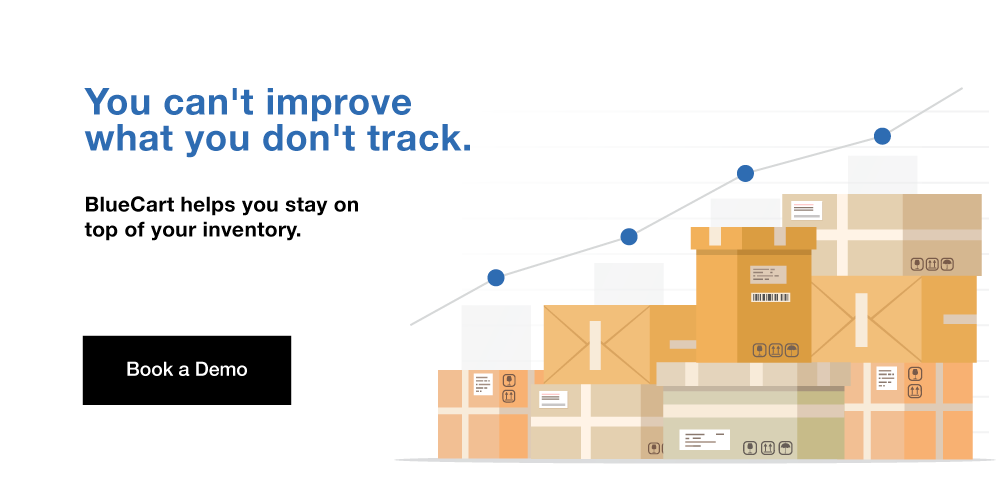Businesses that have multiple sales channels will often find it difficult to manage inventory and customer orders. It may be easy to manually update inventory when you use just one eCommerce sales channel.
However, when customer demands begin to increase as well as the rate of restocking inventory, it just does not make sense to continue manually updating stock levels. As your business expands to using other sales channels, multichannel inventory management becomes a requirement to build efficient business systems.

From updating product listings and descriptions across multiple sales channels to ensuring that customers have a seamless customer experience across all channels, without the right tools, multi channel inventory management becomes challenging. Mismanaging inventory is a no-go area if you want to succeed in the eCommerce industry.
Key Takeaway: If you are just starting in the eCommerce industry, then you know having more than one channel to sell products online is a no-brainer. This is the reason multi channel inventory management is so important.
So, what should you know about multichannel inventory management before you get started? Let’s find out together.
What is Multichannel Inventory Management?
Multichannel inventory management involves keeping track of stock levels, reorder points and inventory forecasting across all sales channels. When supply meets demand, it is necessary to track and plan for inventory turnover.
One inventory pool, one set of sales data, and one set of product listings are typically managed when you sell through a single channel. Examples of single sales channels include Shopify, BlueCart Marketplace, or Amazon.
However, this is not the case with using multiple sales channels. Making sure you don't oversell and making sure there are no disparities between your listed MOQ and what's actually in your distribution warehouse are your key challenges.
This process is significantly more difficult each time you add a new sales channel. Multiple sales channels make it necessary for you to take into account a variety of consumer purchasing habits.
You also need to pay attention to multichannel vs. omnichannel customer experience management, turnover rates, shipping speeds, and demand across channels. This is besides keeping up with inventory levels and managing your sales channels.
Having inventory is essential to running a wholesale distribution business since this is what you sell to your B2B eCommerce customers and other wholesale businesses. When you handle this well, you gain a competitive advantage that benefits your customers.
Customers should be able to order from any platform, receive their products reliably on time, and never run out of stock. This is the goal of the multichannel inventory management process.
Some multichannel eCommerce sellers may encounter several issues when starting. However, these issues can be easily overcomed with the right tools and multichannel inventory management software.
Multichannel inventory management is a game changer for wholesale businesses, wholesale dropshipping suppliers, eCommerce vendors, and dropshippers. Let’s explore some of the benefits of multi channel inventory management.

5 Challenges of Multichannel Inventory Management
From keeping up with raw materials inventory and finished goods inventory to updating your vendor managed inventory and inventory turnover ratio, multichannel inventory management comes with its own challenges.
Meeting consumer requests across a variety of sales channels can be difficult especially if your company is expanding quickly. Overstocking, overselling, and difficulty with inventory visibility are some of the most frequent problems faced by multichannel businesses.
- Overstocking
Keeping too much inventory will drain your financial resources. Most multichannel vendors overstock products because they believe their sales channels can handle it effectively
Overstocking stems from inadequate sales forecasting and not being able to accurately predict customer’s buying patterns and seasonal demands. Keeping too much stock on hand is not a great idea and can lead to loss.
- Overselling
Overselling simply means you accept payment for unavailable products. This is a terrible idea if you run multiple sales channels and have a large customer base.
Although overselling is quite common with multiple sales channels, it is avoidable. Staying on top of your stock levels and updating your product listings across board will save you the trouble of overselling products.
- Customer Experience
Multiple customer interaction channels means you have to be on top of customer relationship management and customer experience management strategies. Customers should not feel that they get better attention on one channel than the other.
It is easy to have discrepancies in brand tone across these channels. Delivering the same quality of service may also be difficult.
- Inventory Tracking
The delivery of goods to customers within the specified time range is your responsibility. In every step of your B2C or B2B sales cycle, you run the danger of more human errors if you don't have a reliable inventory management system in place.
- Rate of Order Defects
The order defect rate (ODR) is a measure that marketplaces use to assess a seller's capacity to deliver a positive customer experience. Going above ODR limitations can result in penalties for marketplace vendors, such as having their selling rights revoked.
5 Reasons Why eCommerce Businesses Need Multi-channel Inventory Management
- Reduces Overstocking and Overselling
Dead stock or overstocking of products can happen if you don't have a firm grasp on inventory or customer demand. Manual inventory control becomes more challenging when selling through multiple channels.
It is simple to ignore a quick shift in sales volume and neglect to restock stock, which results in missed sales opportunities. Automation of this process is enabled by multi-channel inventory management software.
A multi channel inventory management system offers business owners a central database to manage inventory and pricing. This means you do not have to replicate the same process when add new products on different sales channels.
- Improves Inventory Sales Visibility
Vendors can quickly view and evaluate what is in stock across all sales channels and warehouses with the aid of a multi-channel inventory management system. Sellers can also track the impact of sales on inventory in real time.
Order fulfillment may become problematic if you don't always have a clear picture of the movement of your inventory and/or of your products. As a result, you can always check inventory to see at a glance what products are available, which ones you need to refill, and which ones are selling well in each location—all in real time.
- Automates Sales Channels
There are several ways to grow your business, like offering more categories of products, selling through more channels, and keeping inventory in more warehouses. It can be difficult to manage inventory throughout your sales channels, especially when you're introducing and experimenting with new ones.
Your operations can be made more efficient with the help of inventory management system automation. Multi channel inventory management software can monitor the entire supply chain in real-time. The marketplace integrations in the software also provide the ability to automatically restock inventory when a product sells out on one channel or reaches a specified supply level.
- Enhances Customer Experience
With the use of multichannel inventory management technology, customers can easily browse your full inventory across all of your online sites. A consumer placing an order for inventory that is not in stock is the last thing you need.
You can more correctly anticipate consumer wants by controlling your product supply. Every sale can guarantee that the customer's expectations are met.
With the use of multichannel inventory management, it is possible to guarantee accurate product listings, delivery tracking for all orders, and stock control. In order to increase sales of these products and satisfy consumer demands, the system also lets you identify which of your products are best sellers.
- Better Delivery Time
A multi-channel inventory management system enables your business to control inventories at locations all around the world. As a result, shipping times will be quicker and inventory can be located closer to customers.
Orders are fulfilled accurately and on schedule when automated with multi channel inventory management systems. On the other hand, manual order fulfillment will likely lead to inaccurate or partially filled orders, lateness, and greater shipping and inventory expenses.
With BlueCart's route-optimization software and last mile delivery, your business can improve the fulfillment process and make sure that goods are delivered quickly and efficiently.

Frequently Asked Questions About Multi Channel Inventory Management
When you expand your business and add new sales channels, adopting an inventory management system like BlueCart can help you increase sales, increase productivity, and reduce the danger of overselling.
Let’s answer some frequently asked questions about multi channel inventory management.
What is Multi Channel Order Management?
A multichannel order management system is an eCommerce solution that manages orders across multiple selling channels. Order processing, bulk shipping, pricing, warehouse management system, vendor management, and many other procedures are streamlined by multichannel order management solutions.
What is Multi Channel Listing?
Multichannel listing is the act of listing goods and services across many online platforms. Promotion of goods and services via digital catalogs and physical stores is a method of multichannel listing.
What is the Difference Between Single Channel and Multi-channel?
Single channel marketing is the practice of promoting a company's goods and services using just one marketing channel. Multi-channel marketing, on the other hand, refers to the use of multiple channels for brand communication and marketing.
Don’t Disconnect Those Channels
You can encounter issues like overstock, overselling, shipment delays, and other issues brought on by erroneous inventory if you don't have the right system in place. However, these issues can easily be avoided with the right multi channel inventory management system.